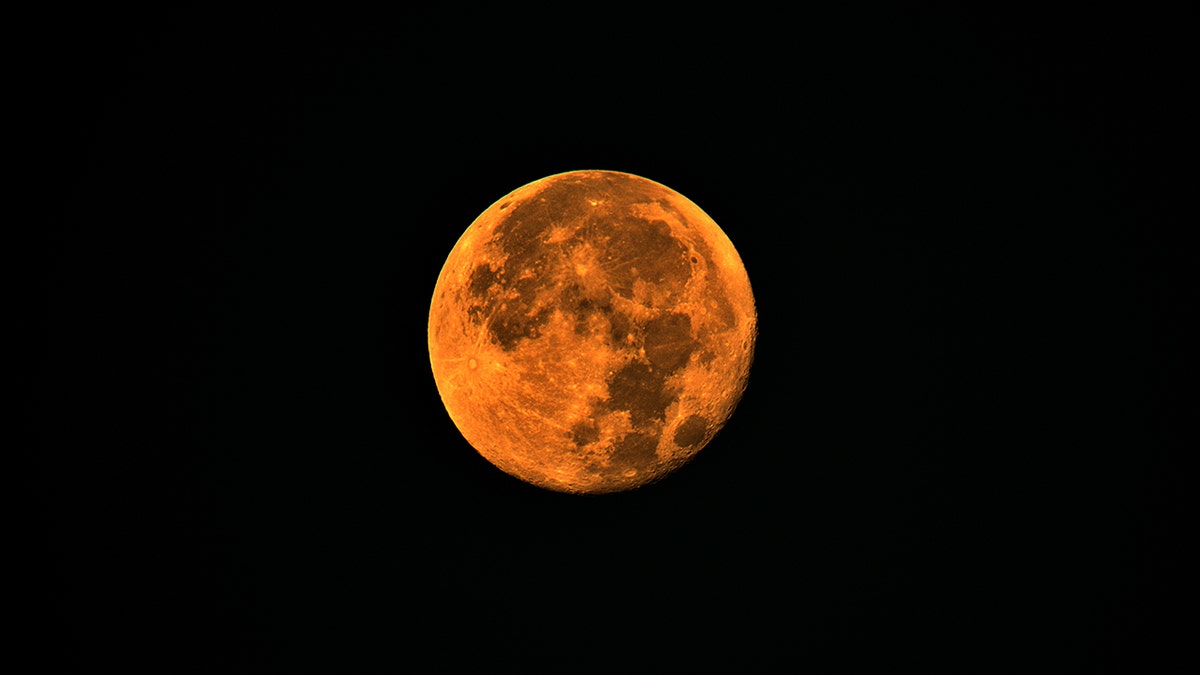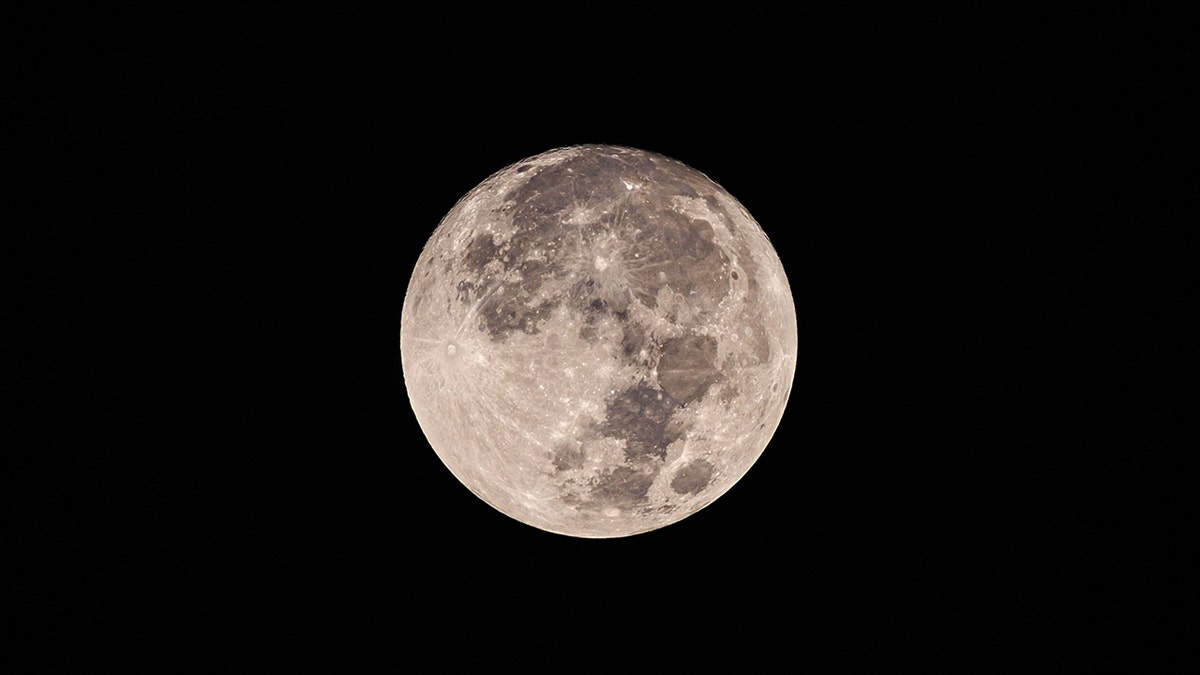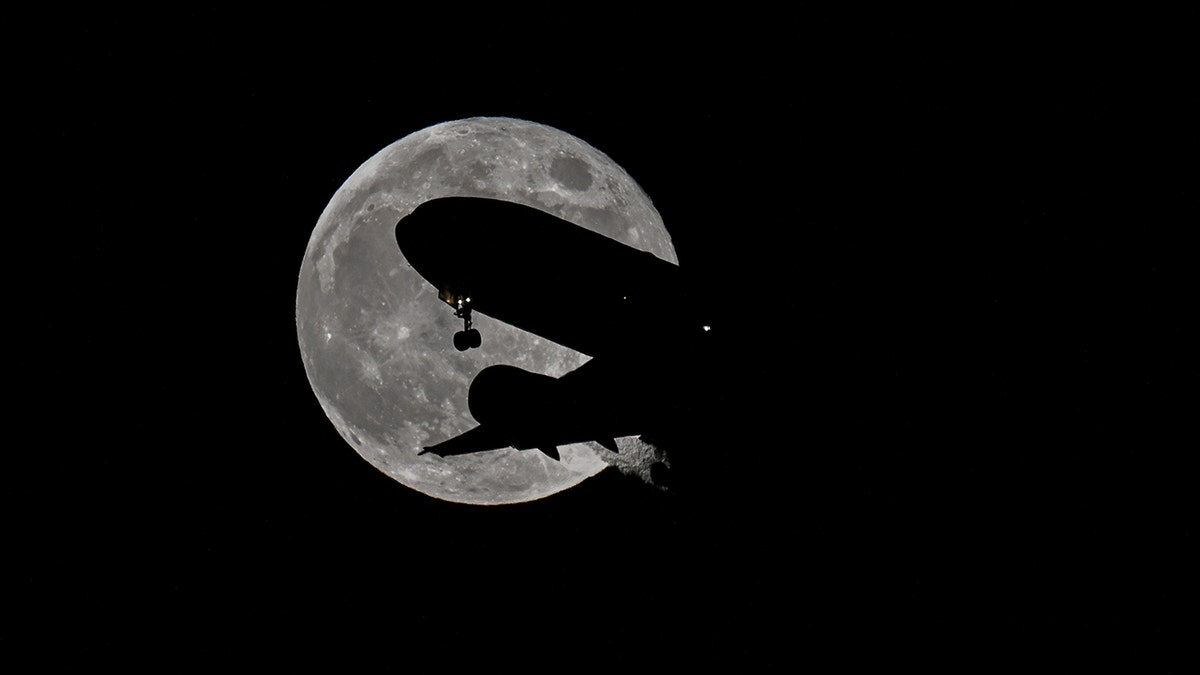Stunning supermoon spotted in the Texas sky
A beautiful supermoon was spotted in the night sky above San Antonio, Texas, on August 1, as seen in this video. The next one to see this month will be on August 30 — also known to NASA as a blue moon.
Tonight, a rare blue supermoon will light up the sky, and the celestial event won't take place again for another two years.
On average, a new full moon can be seen every month among the stars and each has its own unique nickname.
The different names come from "Native American, Colonial American or other traditional North American sources passed down through generations," according to the Farmer's Almanac.
GHOST RAINBOWS, 'RAINING FROGS' AND SUN HALOS: WEIRD WEATHER PHENOMENA SEEN ACROSS THE US
This year, the wolf moon, snow moon, worm moon, pink moon, flower moon, strawberry moon and buck moon have made appearances.
The sturgeon moon in August, the eighth full moon of the year, is especially rare this year since it's rising in the form of a blue supermoon.

A blue supermoon lit up the sky last August as a traditional monthly blue moon. It's unlike the one that will appear today which is considered to be a season blue moon, since it's the third full moon to appear in one season. (Gerard/SOPA Images/LightRocket via Getty Images)
Here are interesting and numerical facts about supermoons.
1. What time will the blue supermoon reach peak illumination?
The blue supermoon, the first supermoon of the year, appeared at 2:25 PM EDT today, but those in North America will not be able to witness the sight until the sun has set, Fox Weather reported.
"It occurs when the moon is at perigee, its closest distance to the Earth, and it appears larger and brighter than usual," Fox Weather continued.
FULL STRAWBERRY MOON: WHAT TO KNOW ABOUT THE SUPERMOON
The full moon will be in effect until Wednesday morning, according to NASA.
The term "blue moon" does not have anything to do with the actual color or hue of the moon, but it refers to the appearance of two full moons in one month, which will not take place again until May 2026, or, in this case, the third full moon to appear in a season.
"Monday's full moon will be the third of the summer with the first two happening on June 21 and July 21," Fox Weather reported.
2. How far back does the prehistoric fish (which August's sturgeon moon is named after) reportedly trace?
The sturgeon moon is named after the sturgeon, a prehistoric fish that has reportedly "been traced back to around 136 million years ago," according to almanac.com.
The nickname refers to the time in which "this large fish of the Great Lakes and other major bodies of water like Lake Champlain is most readily caught," space.com reported.
WHAT IS A STURGEON MOON? THE AUGUST 11 FULL MOON IS ALSO THE LAST SUPERMOON OF THE YEAR
Last year, the sturgeon full moon was seen on Aug. 1 and a blue moon was seen on Aug. 30.
3. How many nicknames are there for September's harvest moon?
The harvest moon, which lights up the night sky in September, has at least three other nicknames including the barley moon, the corn moon, the mid-autumn and mooncake, Fox News Digital previously reported.

Last year's harvest moon was the fourth and final supermoon of 2023. (Soumyabrata Roy/NurPhoto via Getty Images)
A European nickname for it is the fruit moon, since many fruits ripen when summer ends.
SEPTEMBER'S HARVEST MOON: WHAT TO KNOW
The next harvest moon will appear on Sept. 17, 2024, at 10:34 p.m., according to the Farmer's Almanac.
4. In what year was the term hunter's moon identified?
The name hunter's moon was first identified in the Oxford English Dictionary in 1710, Fox News Digital previously reported.

The hunter's full moon, which will appear on Oct. 17, will be the third supermoon of the year. (Tayfun Coskun/Anadolu via Getty Images)
The hunter's moon is also called the travel, dying grass, sanguine or blood moon.
It's typically known as the hunter's moon since leaves fall during October, the deer are fattened and it's time to hunt, according to the almanac.com.
For more Lifestyle articles, visit www.foxnews.com/lifestyle.
The next hunter's moon will appear on Oct. 17, 2024, at 7:26 a.m. It will also be the third supermoon of the year.
5. When did the beaver moon lunar eclipse appear?
The beaver moon lunar eclipse was seen in the sky on Nov. 19, 2021 and was considered "the longest of the century," space.com reported at the time.
The beaver moon is reportedly named due to the moon signaling the time to set beaver traps before swamps freeze "to ensure a supply of warm winter furs," according to space.com.
CLICK HERE TO SIGN UP FOR OUR LIFESTYLE NEWSLETTER
"Another interpretation suggests that the name beaver full moon comes from the fact that the beavers are now active in their preparation for winter," space.com continued, adding that it's "also called the frosty moon."
The Beaver Moon lunar eclipse on Nov. 19 will be the longest of the century. Here are its stages explained. https://t.co/6BYP1bPpHN pic.twitter.com/r6sL6vqIh7
— SPACE.com (@SPACEdotcom) November 15, 2021
The next beaver moon and the final supermoon of 2024 will appear on Nov. 15, at 4:29 a.m.
6. When is the next time a cold moon will appear on Christmas day?
The next time a cold moon, sometimes referred to as a frost moon, will appear on Christmas Day will be in 2034, space.com reported.
The cold moon, sometimes referred to as the "moon before Yule," last appeared one day after Christmas in 2023, unlike the aforementioned nickname, space.com noted.
Full cold moon: When you can see the final full moon of 2022 across America https://t.co/rf6f4WgIcW
— Fox News (@FoxNews) December 7, 2022
"December’s full moon is most commonly known as the cold moon — a Mohawk name that conveys the frigid conditions of this time of year, when cold weather truly begins to grip us," according to almanac.com.
CLICK HERE TO GET THE FOX NEWS APP
This year, a cold moon will appear on Dec. 15 at 4:02 a.m. ET, according to space.com.
Fox News Digital's Julia Musto contributed to this report.


